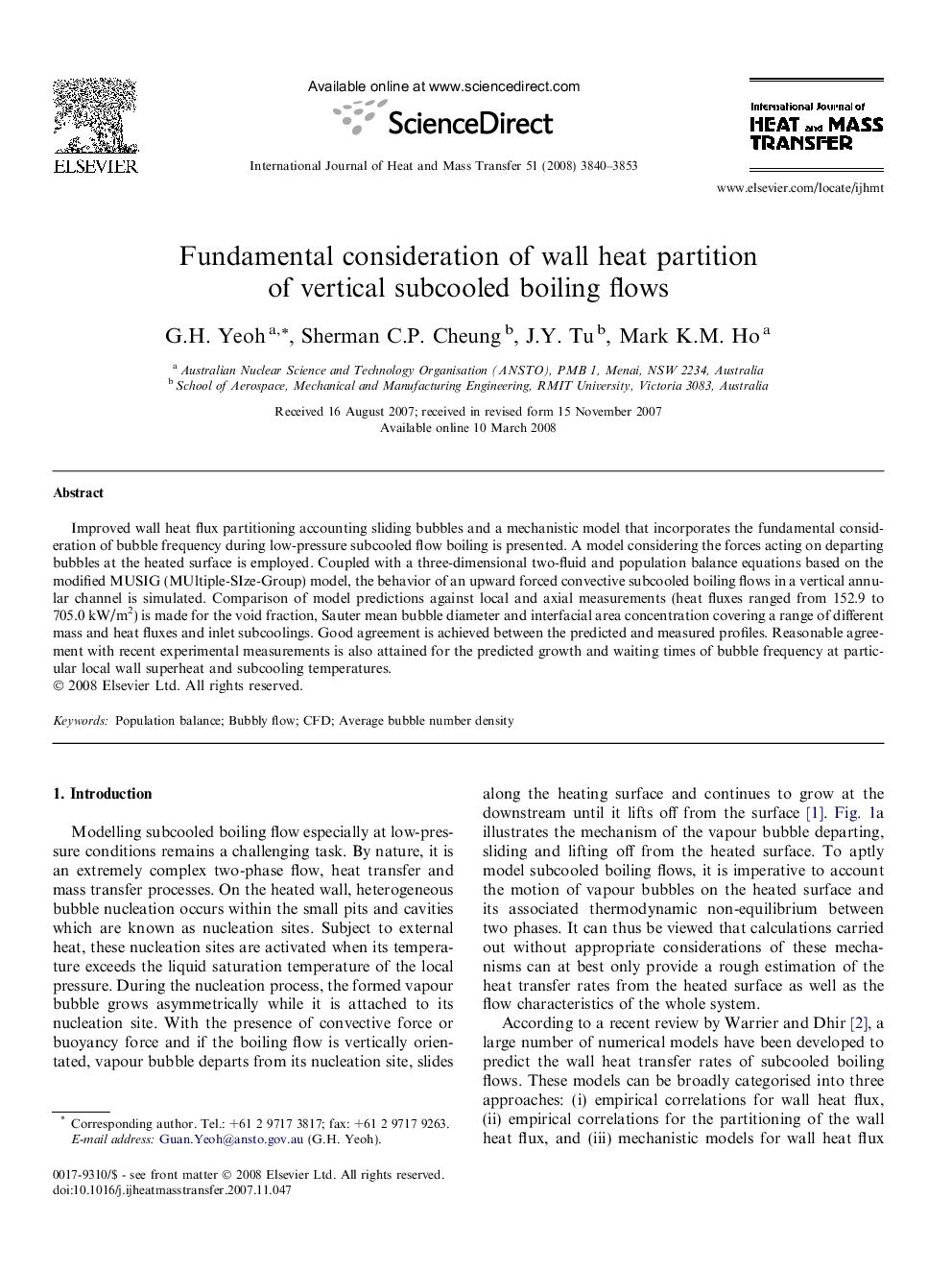| Article ID | Journal | Published Year | Pages | File Type |
|---|---|---|---|---|
| 660959 | International Journal of Heat and Mass Transfer | 2008 | 14 Pages |
Improved wall heat flux partitioning accounting sliding bubbles and a mechanistic model that incorporates the fundamental consideration of bubble frequency during low-pressure subcooled flow boiling is presented. A model considering the forces acting on departing bubbles at the heated surface is employed. Coupled with a three-dimensional two-fluid and population balance equations based on the modified MUSIG (MUltiple-SIze-Group) model, the behavior of an upward forced convective subcooled boiling flows in a vertical annular channel is simulated. Comparison of model predictions against local and axial measurements (heat fluxes ranged from 152.9 to 705.0 kW/m2) is made for the void fraction, Sauter mean bubble diameter and interfacial area concentration covering a range of different mass and heat fluxes and inlet subcoolings. Good agreement is achieved between the predicted and measured profiles. Reasonable agreement with recent experimental measurements is also attained for the predicted growth and waiting times of bubble frequency at particular local wall superheat and subcooling temperatures.
